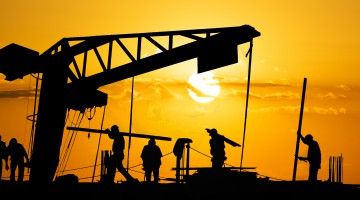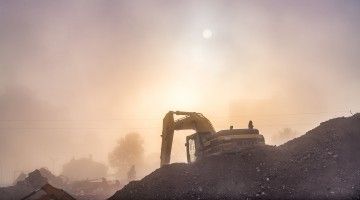Cost and benefits
Questions about costs and benefits sometimes matter to practitioners and policy-makers in occupational health and safety and disability management. Economic evaluation studies at IWH calculate the costs and benefits of injury, illness and disability prevention programs, both workplace-based and at the systems level. Findings from these studies, and discussions about how and what to measure in economic evaluations, are pulled together here.
Featured

IWH Speaker Series
Estimating the financial benefits of OHS spending: a study of Ontario employers
Published: February 14, 2023

IWH Speaker Series
Development and implementation of a framework for estimating the economic benefits of an accessible and inclusive society
Published: February 8, 2022
IWH Speaker Series
IWH Speaker Series
Development and implementation of a framework for estimating the economic benefits of an accessible and inclusive society
Despite progress to date, persons with disabilities still face discrimination and other barriers to full participation in society. What would be the economic benefits if these barriers are removed? Understanding the magnitude of the benefits can provide invaluable information to policy-makers, disability advocates and industry leaders as they consider the rewards of efforts to improve accessibility. In this presentation, IWH Senior Scientist Dr. Emile Tompa shares a framework his research team developed for estimating the economic benefits of an accessible and inclusive society. He also shares the results of the framework when implemented for the Canadian context.
Published: February 2022
Journal article
Journal article
Occupational exposure to wood dust and the burden of nasopharynx and sinonasal cancer in Canada
Published: International Journal of Environmental Research and Public Health, January 2022
Journal article
Journal article
Development and implementation of a framework for estimating the economic benefits of an accessible and inclusive society
Published: Equality, Diversity and Inclusion, January 2022

Research Highlights
The economic benefits of a fully accessible and inclusive Canada
If Canada were a fully accessible and inclusive society, the economic benefits would amount to about $337.7 billion in calendar year 2017. This amount is equal to about 17.6 per cent of the gross domestic product in that year.
Published: November 2021

IWH in the media
Work-related skin cancer among construction workers set to double by 2060
Cases of work-related non-melanoma skin cancer among construction workers in Ontario are on track to double by 2060. However, according to new research done by the Institute for Work & Health (IWH), if protective equipment and clothing such as long-sleeve shirts, pants and neck coverings are worn by construction workers, up to 6,034 cases of such cancers could be averted over the next three decades. That would result in $38 million in costs (in 2017 Canadian dollars) being saved over a 30-year period, Grant Cameron reports.
Published: Daily Commercial News, July 2021

At Work article
Costs of providing UV ray protection at job sites outweighed by averted skin cancers
Ultraviolet radiation due to sun exposure is one of the most common causes of work-related cancer in Ontario. A new study by IWH examines the costs and benefits of providing protective clothing and shade shelter to avert work-related skin cancer over 30 years.
Published: May 2021

At Work article
Comparing the costs, benefits of silica dust prevention methods for construction workers
Construction workplaces can use different methods to reduce exposure to silica dust and protect workers from cancer down the road. But which methods should they opt for? A cost-benefit analysis led by IWH offers some guidance.
Published: August 2020

At Work article
Estimating the societal costs of work injuries and illnesses in five EU countries
To help European Union countries set priorities and analyze potential benefits of tackling work-related hazards, an IWH team developed and implemented a new method for estimating the societal costs of work injuries and illnesses.
Published: January 2020
IWH Speaker Series
IWH Speaker Series
Estimating the economic burden of work injuries and illnesses in the European Union
Knowing the economic burden of work-related illnesses and injuries in a country can help policy-makers set priorities. In a recent project involving five European Union countries, Institute for Work & Health Senior Scientist and labour economist Dr. Emile Tompa, along with post-doctoral fellow Amir Mofidi, developed and executed a new framework for such an estimate. In this presentation, Tompa discusses the approach, its potential, as well as results of the five-country study.
Published: November 2019

At Work article
Raising awareness about caregiver supports results in savings for employer: study
It's one thing to have workplace policies to support employees with unpaid caregiving duties at home. It's another to raise awareness about such policies among staff and their supervisors. That alone can result in savings for the employer, according to a new cost-benefit analysis.
Published: July 2019